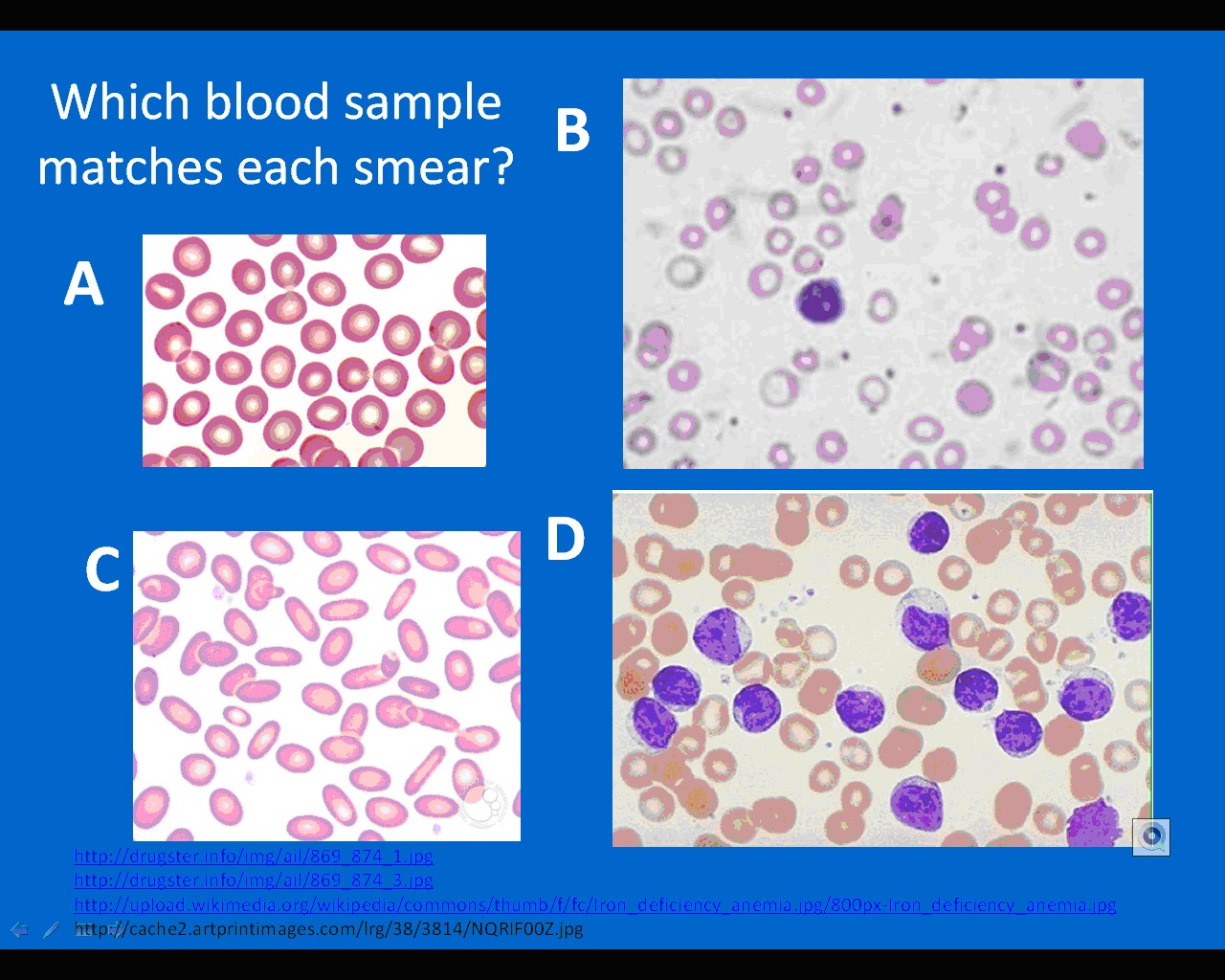Learning aims: |
|
Students are supposed to find out that leukocytes protect the body from pathogens. Some of them absorb and digest the pathogens, other produce antibodies that function in a similar way as in the case of blood types. |
Materials: |
|
Internet connection, pictures in the textbook, photographs of human blood smear (see in classroom materials) |
Suggestions for use: |
|
Ask students (application in attachement): Tell students that they can become experts in recognizing leukocytes. Then let them look at the text and photos in worksheet and ask them: Which types of white leukocytes can you recognise on these photos? Picture examples (Photography: Edita Pauliková) 1 – one eozinophil, two neutrophiles 2 – neutrophil, small and larger lymphocyte 3 – eosinophil 4 – basophil 5 – monocyte 6 - killer All samples also contain red blood cells and platelets. Ask students to look up on the Internet (in the textbook) more photos or pictures of humane leukocytes. Students can explore the relationship between the stainig of leukocytes and their names. Talk with the students about the function different types of leukocytes have and what would happen if they were not present in blood or there were too many leukocytes. How do they protect the body from pathogens? Exercise (task for students): Find on YouTube a blood clotting animation and explain: what is the function of platelets? Some blood diseases: Leukaemia is a type of cancer of the blood in which the cells of the bone marrow make too many white blood cells. These are not normal white blood cells and they do not fight disease Symptoms: Fatigue, frequent infections. The sufferer becomes pale and may have flu symptoms. Anaemia is a disease in which there is a shortage of red blood cells. This may be because of a shortage of iron or vitamin B which prevents the red blood cells being made or it may be because they have been lost in bleeding. Symptoms: Fatigue, shortness of breath, yellow skin and eyes (jaundice). Chemotherapy patient Chemotherapy is a very powerful weapon against cancer which is a disease in which a person’s own cells start to divide rapidly in an uncontrolled way. It kills all cells which are dividing rapidly and this includes cells in the bone marrow which are dividing to make white blood cells Symptoms: A person with this condition is very inclined to pick up infections of all kinds. Hereditary elliptocytosis is a disorder in which the red blood cells are abnormally shaped. It often runs in families. Elliptocytosis affects about 1 in every 2,500 people. Symptoms: Fatigue, shortness of breath, yellow skin and eyes (jaundice). |
Possible questions: |
|






